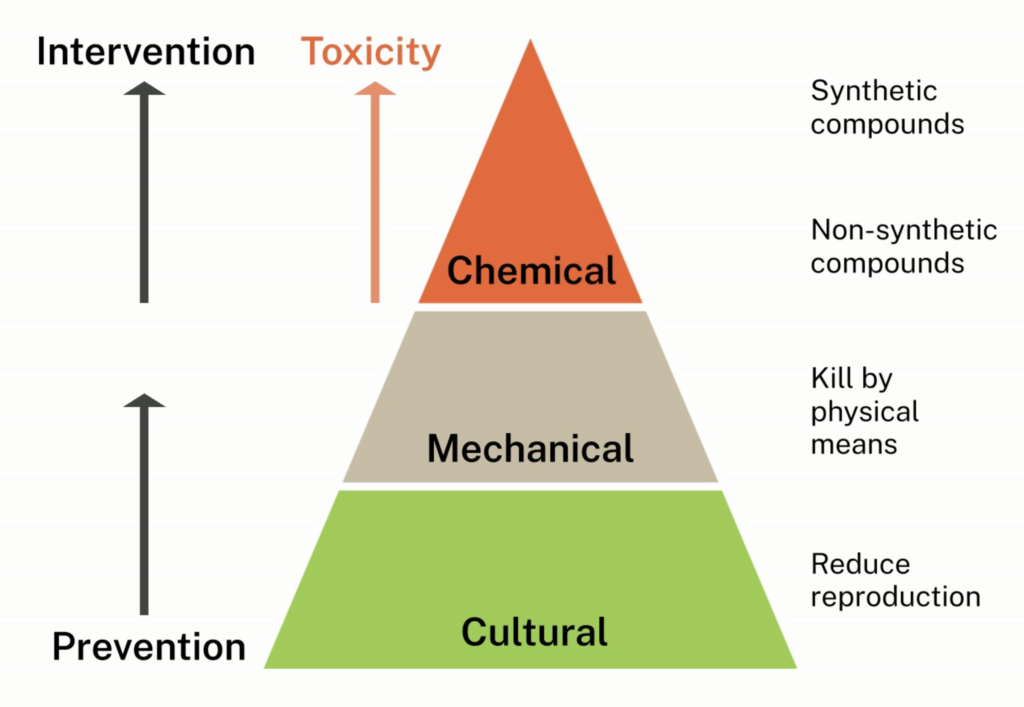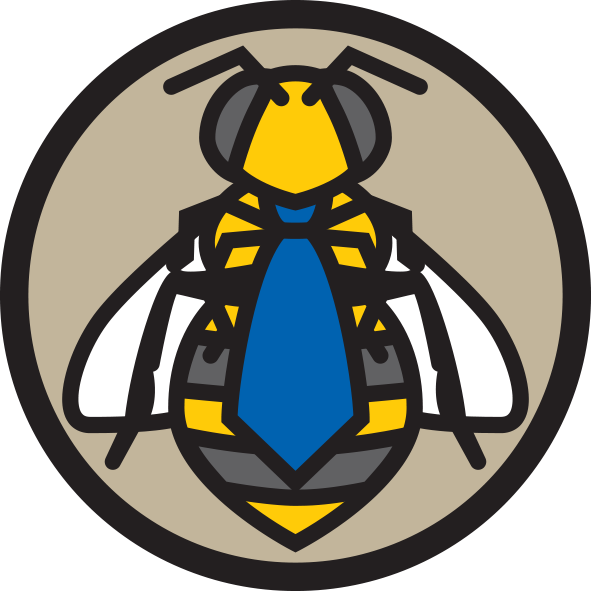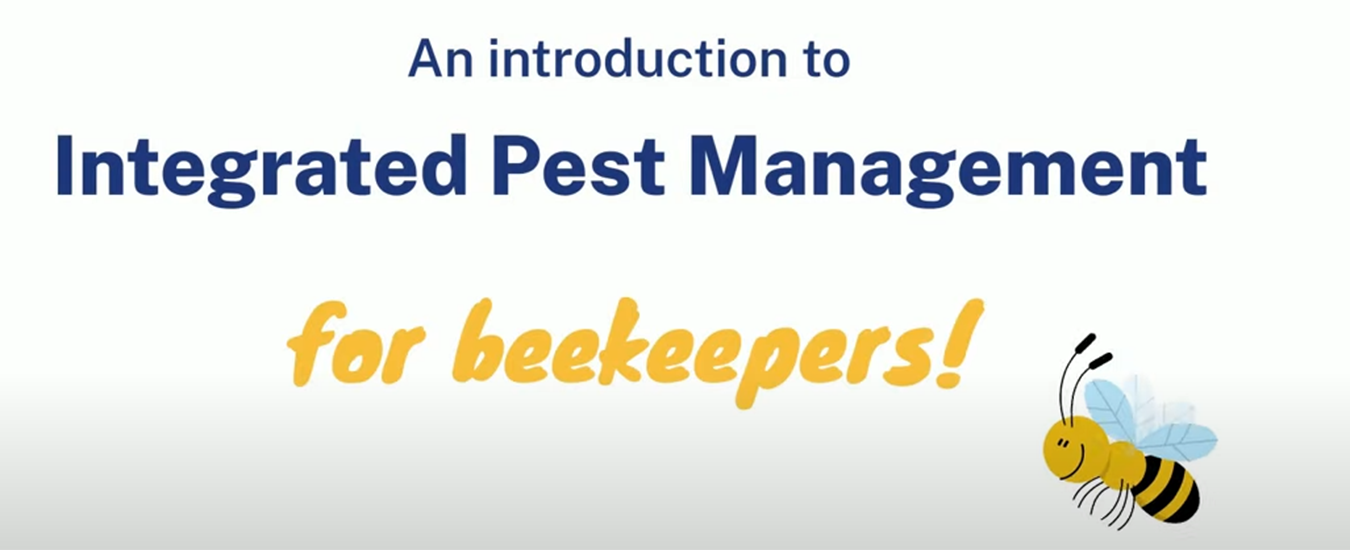It can be overwhelming to decide how to manage pests and diseases in your honey bee colonies, especially when there is already a long list of things to accomplish in the apiary. However, pests and diseases can do irreversible damage and spread between colonies if ignored–that’s where integrated pest management (IPM) can help. IPM provides the framework for a balanced and effective control plan before an infestation gets out of hand.
IPM works on the principle that the presence of a pest or disease in a hive is acceptable as long as it is below the level at which a beekeeper’s operation begins to suffer. Depending on the level of infestation, different treatment types are justified. IPM always begins with prevention, and as level of infestation increases, different treatments are used to bring it back down below the level that can damage a beekeeper’s business. This allows beekeepers (and other farmers and growers) to practice sustainable pest management while minimizingith minimal harm to bees, humans and the environment. Keep in mind that IPM is important for beekeepers of every scale.
The video “Introduction to Integrated Pest Management for Beekeepers” below summarizes the major steps in IPM and provides examples of how IPM can be implemented with a familiar foe, the small hive beetle.
Did you recognize any IPM strategies from the video that you are currently using to manage pests and diseases in your honey bee colonies?
You might be pleasantly surprised to find that IPM is already part of your beekeeping approach. This video can serve as a guide to either bolster your current approach or start an IPM plan from scratch.
Let’s review the big IPM takeaways to help with your plan:
- Don’t ignore. Be able to identify pests and diseases you may come across and monitor appropriately.
- Avoid economic injury. Where possible, prevent pests and diseases. Have an action plan if any reach damaging levels in your colonies.
- Integrate management methods. Keep cultural, mechanical, and chemical options in your arsenal (figure 1). Try cultural and mechanical controls before resorting to chemicals. Combining different methods will increase control efficacy and reduce the likelihood of creating chemical resistance in pests and diseases.

Figure 1. The Integrated Pest Management pyramid.
The methods for monitoring, preventing, and controlling different pests and diseases are constantly evolving. It is important to stay up to date with these methods to keep a robust IPM plan. Below are some resources to continue your IPM journey with common honey bee pests and diseases:
- NSW Department of Primary Industries honey bee pests and diseases page
- Managing Your Hives with Varroa
- Should you use antibiotics to treat your hives?
- European Foulbrood
- Managing hives to minimise damage from small hive beetles
Acknowledgements:
This article was peer-reviewed by Michael Holmes and Madlen Kratz.


